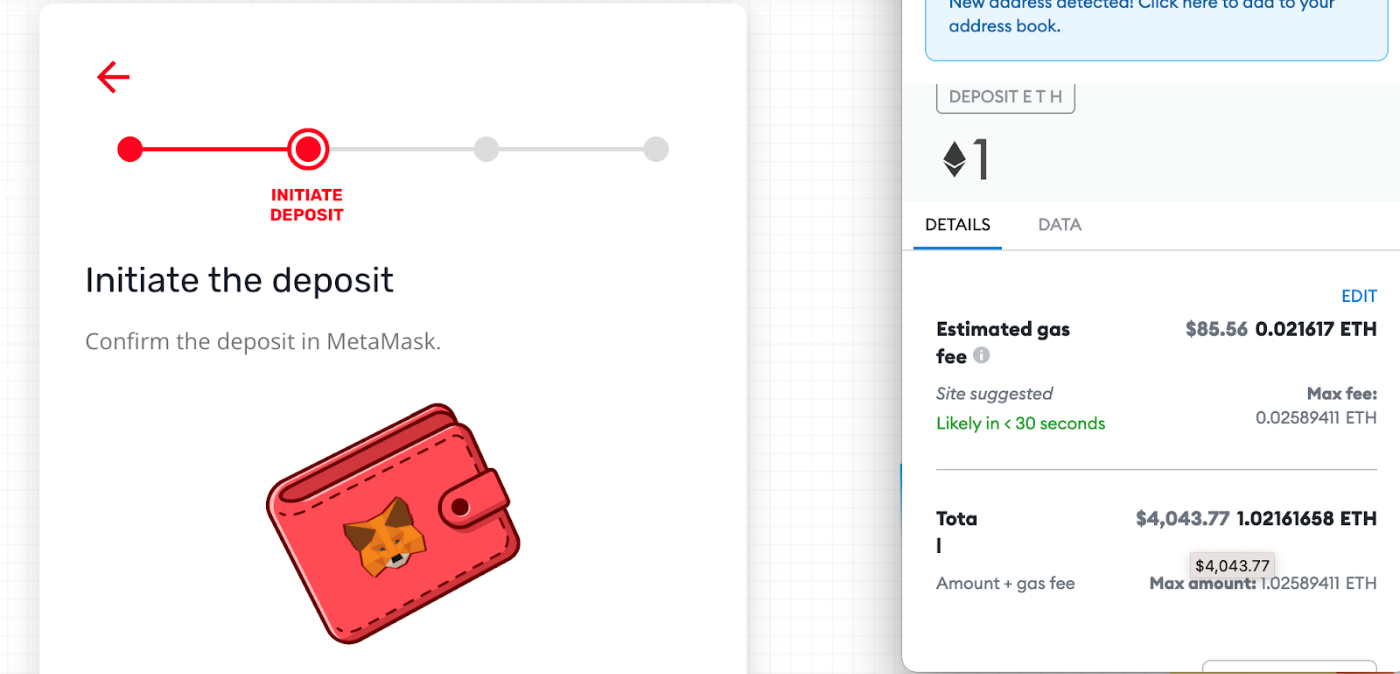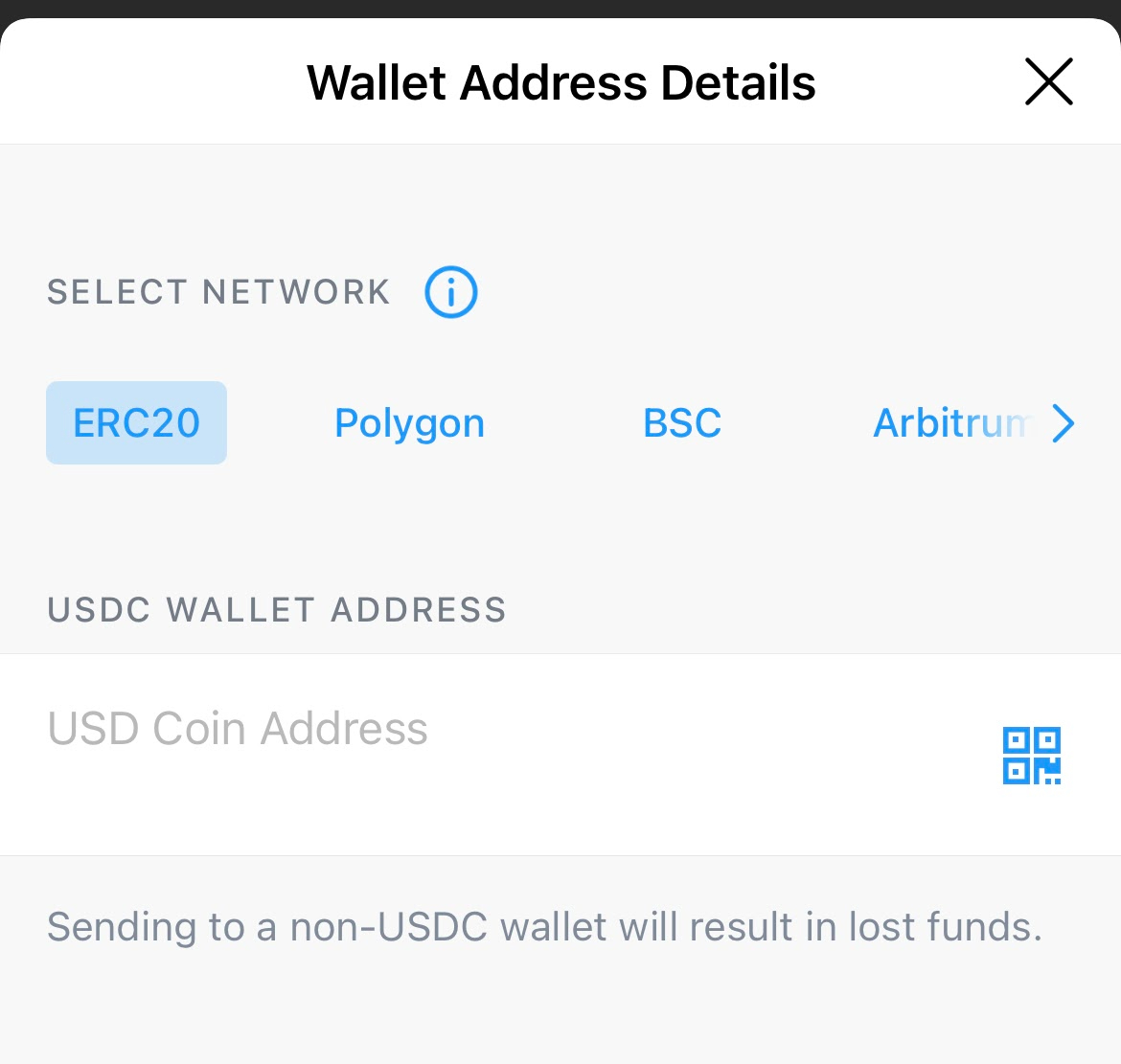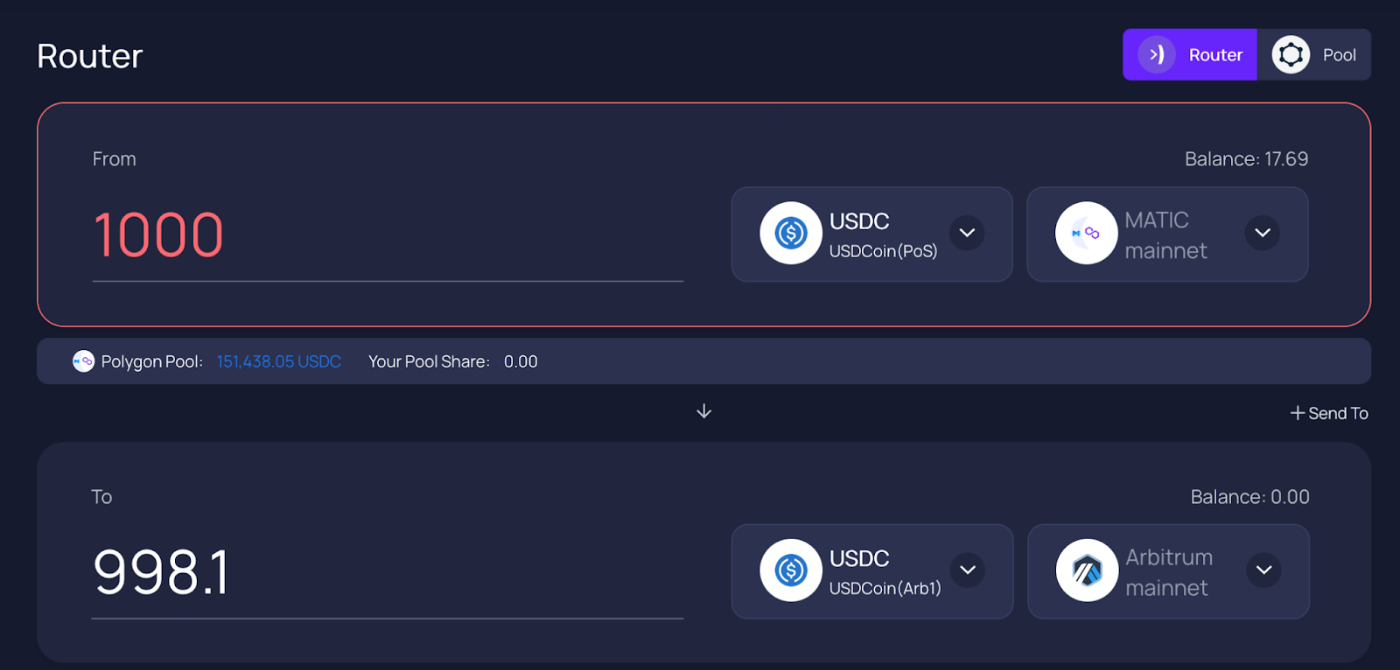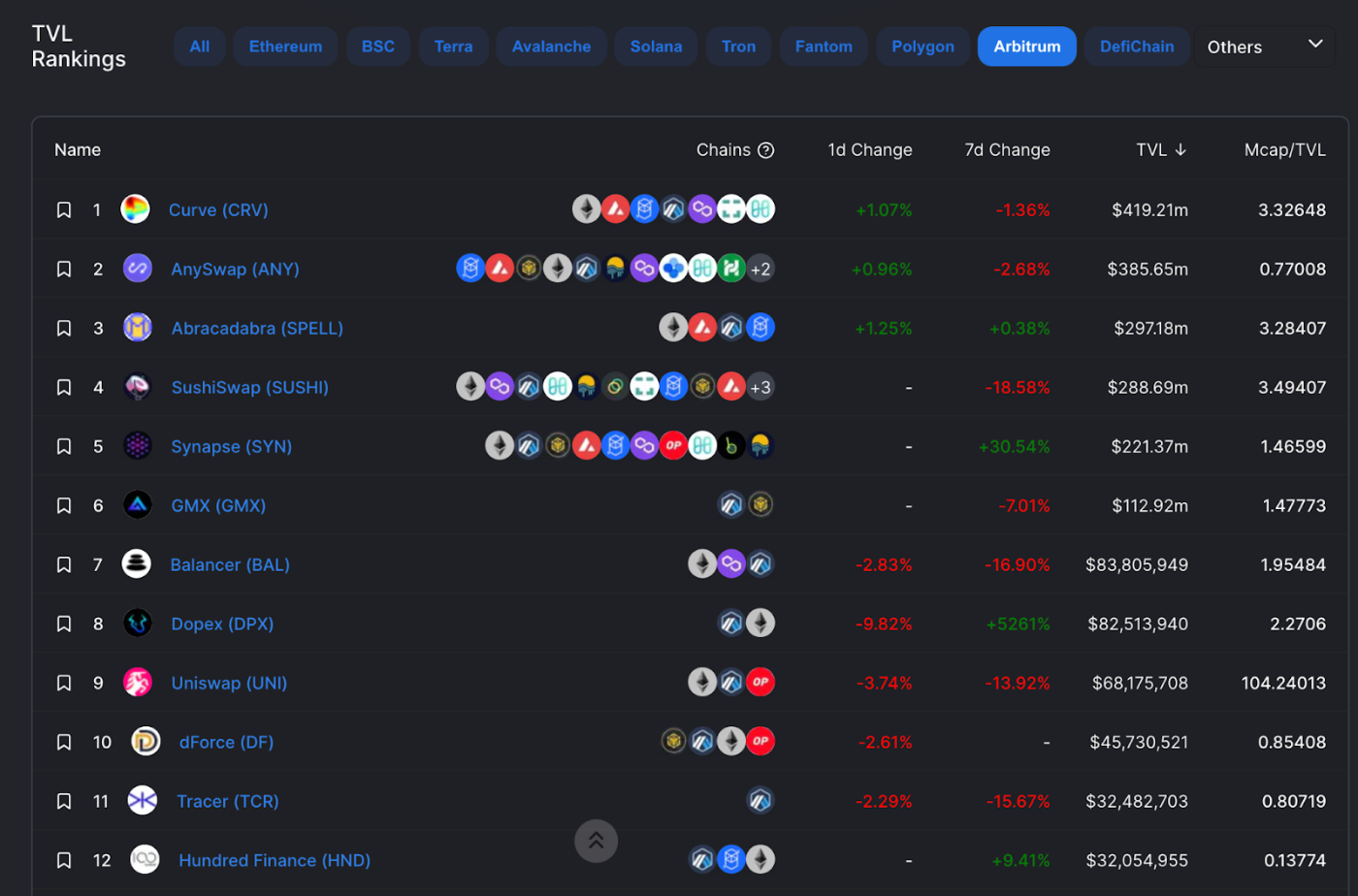
When I started writing DeFriday, you could do most transactions on Ethereum for less than $10-20.
That’s not cheap, but it was manageable if you were moving around a modest portfolio.
Then NFT summer happened. Tons of new people started using Ethereum, and given the fixed bandwidth for transactions, the mania around NFTs drove the average gas price to insane levels. Since the start of summer, it hasn’t been unusual to see basic DeFi interactions cost $50 - $200.
Obviously, that price is completely alienating for anyone moving around less than six figures at a time. Can you imagine if every time you bought a cup of coffee you had to pay $50 for the credit card processing? Insanity.
The insane gas fees on Etheruem have driven adoption for a number of alternative blockchains: Solana, BSC, Polygon, Avalanche, Fantom, you have tons of options now if you want an Etheruem-like experience without the gas fees.
You don’t get the low gas for free, though. Most alternatives end up sacrificing decentralization and/or security in order to speed things up. The Solana network completely crashed for 20 hours a couple months ago (neither Bitcoin or Ethereum have ever gone down). BSC copy & pasted Ethereum and just sped things up, but that’s led to numerous security issues and fracturing of the blockchain. Plus the whole thing is basically controlled by Binance.
What most people don’t know is: Gas fees on Ethereum are supposed to be high. The goal for Etheruem is not to be the chain most consumers transact on. It’s to be the settlement layer for a number of other chains sitting on top of it, which can run much faster and much cheaper, because they’re backed by Ethereum’s security and infrastructure. In other words: the consensus layer for a variety of networks.
The problem though is that these second layer chains, the “L2s,” have been in development for years without users being able to hop on. It’s been a lofty promise that “someday” you’ll be able to ditch the Ethereum mainnet and do everything on the faster, cheaper, L2s without having to give up security or decentralization.
Well, those days are finally here. In the last couple months, and coming over the next year, we’re seeing an explosion of new L2 technology popping up to give Web3 users the best of both worlds.
Lightning fast cheap transactions, and Ethereum’s level of decentralization and security.
If you’ve been putting off exploring DeFi because of the awful gas fees, now’s the time to hop in. Layer 2 Living is here, and this is how you can take advantage of it, and why you might want to consider it over competing Layer 1 chains like Solana.
Hopping on an L2
Since an L2 sits on top of Ethereum, you normally can’t get to one unless you start on Ethereum.
All of the growing L2s offer “bridges” where you can send your Ethereum funds to the L2. There’s one for Polygon, Arbitrum, Optimism, and more are on their way.
Note: Polygon is technically a sidechain, not an L2, but it does store all of its data on Ethereum unlike other competing L1s like Avalanche, BSC, Fantom, Solana, etc. So for our purposes we’ll just call Polygon an L2, but it is less secure than Arbitrum or Optimism, for reasons I explain in my Polygon article.
The problem is that since these bridges are on Ethereum, they cost Ethereum gas to use, which we know can get pretty expensive. Right now it would cost about $90 for me to send my funds from Ethereum to Optimism:
That’s not ideal. Thankfully, a number of crypto exchanges have started natively supporting Layer 2 withdrawals, meaning you can send your funds straight from the exchange to the L2 of your choice.
Even though we’ve had some L2s for a while, like Polygon, this was always the big missing piece. Without a direct link between exchanges and L2s, there’s still a huge gas fee to hop on. But no more.
Now you can go straight from certain exchanges to some of the more popular L2s, and never have to think about gas fees again.
The two I’ve found that are the best for this right now are Crypto.com and Dharma. (Coinbase sadly doesn't support any L2s yet). And because Crypto.com has been so fast at integrating L2s, they’re really the only exchange I use much anymore.
If you hold any assets that you can use on an L2, like USDC or ETH, when you go to Withdraw them, Crypto.com lets you pick what chain you want to send them to. Right now their options are Ethereum, Polygon, BSC, Aribtrum, Solana, Avalanche, and Cronos, and they seem to be adding more pretty often.
The fees are minimal too, since they don’t have to pay the Ethereum gas fees for the transfer. It might only cost a couple cents to send your funds onto Polygon for example.
Dharma offers a similar option, though they only support Polygon withdrawals for now. Whichever you use though, you can now send your funds straight to Polygon to bypass Ethereum entirely. And once you’re on Polygon, you can go anywhere else you want.
Navigating Among L2s and Other Chains
If I’m taking my money off an exchange I typically send it straight to Polygon instead of Ethereum now. It’s much faster, gas is essentially free, and I can use it in almost as widely varied places as I can on Ethereum.
But sometimes you want to do something on a different chain entirely. Thankfully the bridge infrastructure has improved dramatically over the last few months as well, so if you want to move from Polygon to Solana, or Arbitrum to Avalanche, you have a number of ways to do it quickly and cheaply.
The list of good bridges is growing by the day, but the ones I particularly like and use a lot are:
Using those, you can easily move among every blockchain, L2, and Sidechain that supports any kind of crypto activity, including DeFi. And you can often do it for extremely low fees compared to moving from the Ethereum mainnet.
For example, moving $1,000 from Polygon to Arbitrum only costs $1.90 on Anyswap:
Between being able to go straight from an exchange to Polygon, and then from Polygon to any other chain, you don’t have to touch the Ethereum mainnet at all.
But once you’re on these other blockchains or L2s, how do you find applications to use? I’ve written about a number of applications in past DeFridays, but most of them are on the Ethereum Mainnet. So where else can you look?
Finding Apps on Other Chains
There are a few types of DeFi apps you’ll usually look for when you are using a new blockchain:
- Decentralized Exchanges
- Lending and Borrowing
- Yield aggregators or autocompounders
The best way to find them is to visit a ranking site like DeFi Llama, filter by the chain you’re using, and check out the top applications.
For example, if I want to find the best apps to try on Arbitrum, I can filter by Arbitrum and start exploring:
It won’t clue you in to the hot new launches that haven’t gone mainstream yet. But it will help you get your bearings and find the core set of apps you’ll use most often. And from there, you can take full advantage of DeFi without ever having to bother with the Ethereum mainnet.
There are still some applications there which haven’t launched on L2s yet, but that list is getting shorter, and I suspect in the next 3-6 months every major Ethereum protocol will have launched on at least one of the L2s.
What about NFTs and DAO tooling? Those are launching rather quickly as well. NFTs have started getting popular on Polygon, and there are entire L2s dedicated to NFTs like Immutable X. For DAOs, the primary DAO app: Gnosis Safe, supports almost every large L2 now, and it shows the different DAO-related apps you can use within Gnosis when you’re logged in.
And it gets better…
Your options for true L2s right now are Arbitrum and Optimism, both of which are “Optimistic Rollups” like I wrote about a few months ago.
Optimistic rollups are great for how they scale Ethereum, but you’ll still notice some gas fees. An Arbitrum transaction might cost $5-10 right now. It’s a lot better than $200, but it’s still not zero.
As of last week though, the first “ZK Rollup” L2, Starknet, launched and can potentially bring the gas fees down another 100x. It’s still in the alpha phase, but as Starknet scales and other ZK Rollups come online, using Ethereum is likely to get even cheaper and faster than the incredibly user-friendly Solana.
More L2s are rolling out all the time, and most don’t have tokens yet. It’s hard to know which ones will release tokens later or not, but if you want to have the chance to receive any token airdrops, make sure you start playing around with them.
The ENS airdrop was worth $10,000 - $20,000 for many people. Who knows how much an L2 token drop might be worth. And the best way to have a chance at getting one is to dive in and start experimenting.
Enjoy Layer 2 Living!
The Only Subscription
You Need to
Stay at the
Edge of AI
The essential toolkit for those shaping the future
"This might be the best value you
can get from an AI subscription."
- Jay S.
Join 100,000+ leaders, builders, and innovators

Email address
Already have an account? Sign in
What is included in a subscription?
Daily insights from AI pioneers + early access to powerful AI tools











Comments
Don't have an account? Sign up!
great stuff, as always ... thanks!